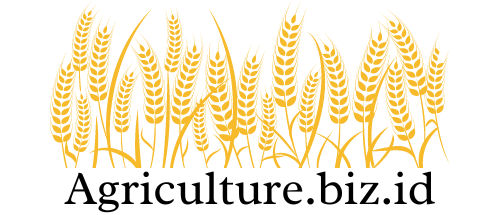Welcome to our comprehensive guide on combine harvesters! In this article, we will delve into the world of these remarkable agricultural machines, exploring their functionality, various types, and the benefits they offer to farmers. Whether you’re a seasoned farmer looking to upgrade your equipment or simply curious about how these machines work, you’ve come to the right place. So, let’s dive in and discover everything you need to know about combine harvesters!
What is a Combine Harvester?
A combine harvester, also known as a combine, is a versatile agricultural machine designed to efficiently harvest and process various crops in a single operation. It combines the functionalities of reaping, threshing, and winnowing, making it an indispensable tool for modern farming.
1. Reaping
The first step in the harvesting process is reaping, which involves cutting the mature crops from the fields. Combine harvesters are equipped with a cutting mechanism, typically a rotating header that can be adjusted to match the crop height. As the machine moves forward, the header cuts the crops, cleanly separating them from the stalks.
2. Threshing
After reaping, the harvested crops, which may include grains like wheat, barley, or oats, are still attached to the plants’ stalks. Threshing is the process of separating the grains from the stalks or husks. Inside the combine harvester, a threshing mechanism consisting of rotating drums or beaters works to separate the grains from the rest of the plant material.
3. Winnowing
Once the grains are separated, the next step is winnowing. This process involves removing any remaining chaff, straw, or debris from the grains. The combine harvester achieves this by using a combination of sieves, blowers, and fans. The sieves allow the grains to pass through while redirecting the remaining material to the rear of the machine, where it is expelled as waste.
4. Collection
Finally, the harvested and processed grains are collected in a storage tank within the combine harvester. This tank, also known as a grain tank, has a large capacity, allowing for continuous harvesting without the need for frequent unloading. Once the grain tank is full, it can be emptied into a separate storage container or directly into a transport vehicle.
Combine harvesters are equipped with advanced technologies, including sensors and onboard computers, to optimize the harvesting process. These machines have greatly increased efficiency and productivity in agriculture, allowing farmers to harvest larger areas in less time, with minimal manual labor.
The Different Types of Combine Harvesters
Combine harvesters come in various types, each designed to cater to specific crop harvesting needs. Let’s explore some of the most common types:
1. Conventional Combine Harvesters
Conventional combine harvesters are the traditional and widely used type. They feature a cutting mechanism at the front, followed by a threshing and separating unit. These machines are versatile and suitable for harvesting a wide range of crops.
2. Rotary Combine Harvesters
Rotary combine harvesters employ a different method for threshing and separating the grains. Instead of using drums or beaters, they utilize a rotating rotor with specialized rasp bars. This design provides efficient grain separation and is particularly effective for harvesting crops with tough straw, such as rice or corn.
3. Stripper Combine Harvesters
Stripper combine harvesters are specifically designed for crops with minimal grain attachment, such as soybeans or sunflowers. These machines use a stripping mechanism to remove the grains from the plants, leaving the rest of the plant material in the field as mulch or fodder.
4. Twin Rotor Combine Harvesters
Twin rotor combine harvesters, as the name suggests, feature two rotating rotors for threshing and separating the grains. This design offers enhanced efficiency and throughput, making them suitable for high-yield crops like wheat or barley.
5. Track Combine Harvesters
Track combine harvesters are equipped with tracks instead of traditional wheels. This improves their mobility and allows them to operate effectively in challenging terrain or wet conditions, minimizing soil compaction and maximizing productivity.
Each type of combine harvester has its advantages and is suited to specific crop types and harvesting conditions. Farmers can choose the appropriate machine based on their requirements and the crops they cultivate.
The Benefits of Using Combine Harvesters
Combine harvesters offer numerous advantages to farmers, revolutionizing the harvesting process. Here are some key benefits:
1. Time and Labor Efficiency
With their ability to perform multiple harvesting operations in one pass, combine harvesters significantly reduce the time and labor required for harvesting. Farmers can cover larger areas quickly, optimizing their productivity and allowing them to focus on other essential farming tasks.
2. Increased Yield and Quality
Combine harvesters ensure a higher yield and better grain quality compared to manual harvesting methods. The machines are designed to harvest crops at the optimal time, ensuring maximum grain maturity and minimizing losses. This results in improved crop yield and superior grain quality, ultimately leading to higher profits for farmers.
3. Reduced Crop Losses
By incorporating efficient threshing and separating mechanisms, combine harvesters minimize crop losses during harvesting. These machines are equipped with advanced technologies that adjust settings based on crop conditions, ensuring minimal damage to the grains and reducing losses due to shattering or mishandling.
4. Versatility and Adaptability
Combine harvesters are versatile machines capable of harvesting a wide range of crops. They can be adjusted and fitted with various headers and attachments to accommodate different crop types and field conditions. This versatility allows farmers to diversify their crop choices and adapt to changing market demands.
5. Cost Efficiency
While the initial investment in a combine harvester might be significant, the long-term cost savings outweigh the expense. By reducing labor requirements and increasing efficiency, these machines help farmers save on labor costs. Additionally, the improved yield and grain quality result in higher selling prices, further enhancing profitability.
Combine harvesters have transformed the agricultural industry, providing farmers with a powerful tool to streamline their operations and maximize their harvests. Their time-saving, labor-efficient, and cost-effective nature make them an indispensable asset for modern farming.
Tips for Efficient Combine Harvester Operation
To ensure optimal performance and maximize the benefits of using a combine harvester, farmers should keep the following tips in mind:
1. Regular Maintenance
Perform regular maintenance checks on your combine harvester to keep it in excellent working condition. This includes cleaning, lubricating, and inspecting key components such as the cutting mechanism, threshing unit, and sieves. Address any issues promptly to prevent breakdowns during critical harvest times.
2. Proper Calibration
Calibrate your combine harvester before each harvest to ensure accurate grain yield measurement and minimize losses. Adjust the settings according to the crop type, field conditions, and moisture levels to achieve optimal threshing and separating performance. Consult the manufacturer’s guidelines for recommended calibration procedures.
3. Monitor Crop Conditions
Stay vigilant and monitor crop conditions throughout the harvesting process. Keep an eye on factors such as crop maturity, moisture levels, and weather forecasts. Harvesting at the right time and under optimal conditions can significantly impact grain quality and minimize losses.
4. Adjust Ground Speed
Adjust the ground speed of the combine harvester based on crop conditions. A slower speed might be necessary for crops with tough straw or high moisture content, while a faster speed can be suitable for well-dried crops. Finding the right balance ensures efficient harvesting and minimizes grain damage.
5. Clean the Machine Regularly
Regularly clean the combine harvester, particularly after each harvest, to remove any crop residue or debris. Pay attention to areas like the sieves, chaff spreaders, and grain tanks. A clean machine operates more efficiently, reduces the risk of fire, and prolongs the lifespan of the equipment.
By following these tips and implementing best practices, farmers can optimize the operation of their combine harvesters, leading to increased efficiency, improved grain quality, and higher overall productivity.
The Future of Combine Harvesters: Advancements and Innovations
As technology continues to advance, combine harvesters are evolving to meet the demands of modern agriculture. Here are some exciting advancements and innovations shaping the future of combine harvesters:
1. Precision Agriculture Integration
Combine harvesters are now incorporating precision agriculture technologies, such as GPS and remote sensing. These advancements enable precise field mapping, yield monitoring, and real-time data collection during harvesting. This data-driven approach allows farmers to make informed decisions, optimize field management practices, and maximize crop productivity.
2. Intelligent Automation
The future of combine harvesters lies in intelligent automation. Machine learning algorithms and artificial intelligence are being integrated into these machines to enhance decision-making capabilities. From automatically adjusting settings based on crop conditions to optimizing harvesting strategies, intelligent automation improves efficiency and reduces human error.
3. Sustainability and Environmental Considerations
Manufacturers are focusing on developing combine harvesters with improved environmental sustainability. This includes advancements in fuel efficiency, reduced emissions, and enhanced waste management systems. Additionally, features like optimized soil compaction and reduced chemical usage contribute to sustainable farming practices.
4. Robotics and Autonomous Operation
Robotic technologies and autonomous operation are being explored for combine harvesters. These innovations aim to eliminate the need for human operators in the field, increasing efficiency and reducing labor costs. While fully autonomous combine harvesters are still in development, significant progress is being made in this area.
5. Multi-Crop Harvesting Capabilities
The future of combine harvesters includes the ability to efficiently harvest multiple crop types. Machines with adaptable headers and mechanisms that can handle various crops, from grains to oilseeds and specialty crops, will provide farmers with increased flexibility and productivity.
The future of combine harvesters is promising, with advancements focused on precision agriculture, automation, sustainability, and versatility. These innovations will revolutionize farming practices, ensuring more efficient, environmentally friendly, and productive harvesting operations.
In conclusion, combine harvesters have revolutionized the agricultural industry by streamlining the harvesting process and improving efficiency. These versatile machines encompass reaping, threshing, and winnowing functionalities, reducing the time and labor required for harvesting. With different types available, farmers can choose the right combine harvester for their specific crop and field conditions.
The benefits of using combine harvesters are numerous. They offer time and labor efficiency, increased yield and quality, reduced crop losses, and cost-effectiveness. Farmers can optimize their operations, save on labor costs, and achieve higher profits by utilizing these machines. Regular maintenance, proper calibration, and monitoring of crop conditions are essential for efficient combine harvester operation.
Looking towards the future, combine harvesters are poised to incorporate precision agriculture technologies, intelligent automation, and sustainable practices. Advancements in robotics and autonomous operation are on the horizon, promising even greater efficiency and productivity. Additionally, the ability to harvest multiple crop types will provide farmers with increased flexibility and versatility.
As technology continues to advance, combine harvesters will continue to play a crucial role in modern farming, ensuring optimal harvesting results and contributing to the sustainable growth of the agricultural industry.

